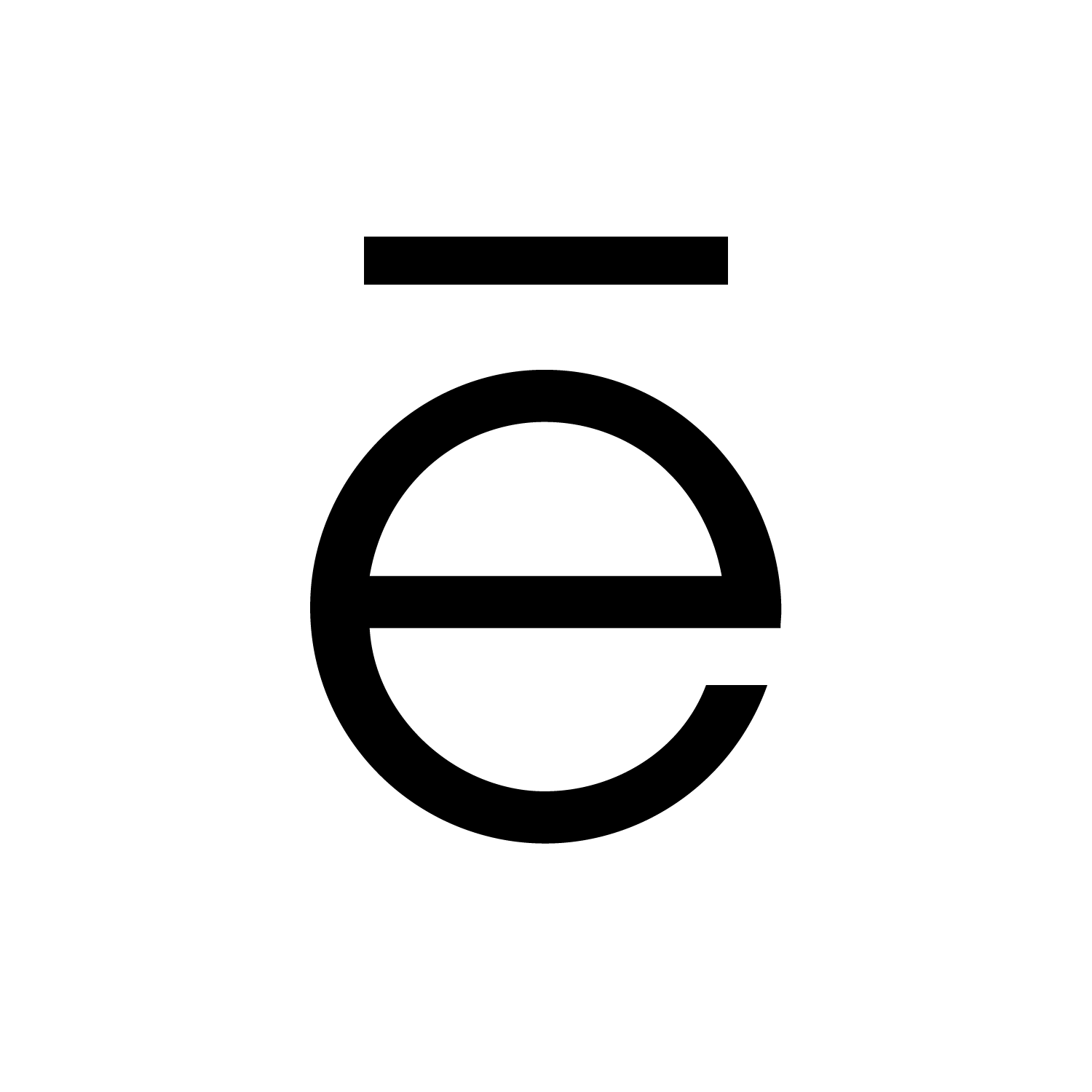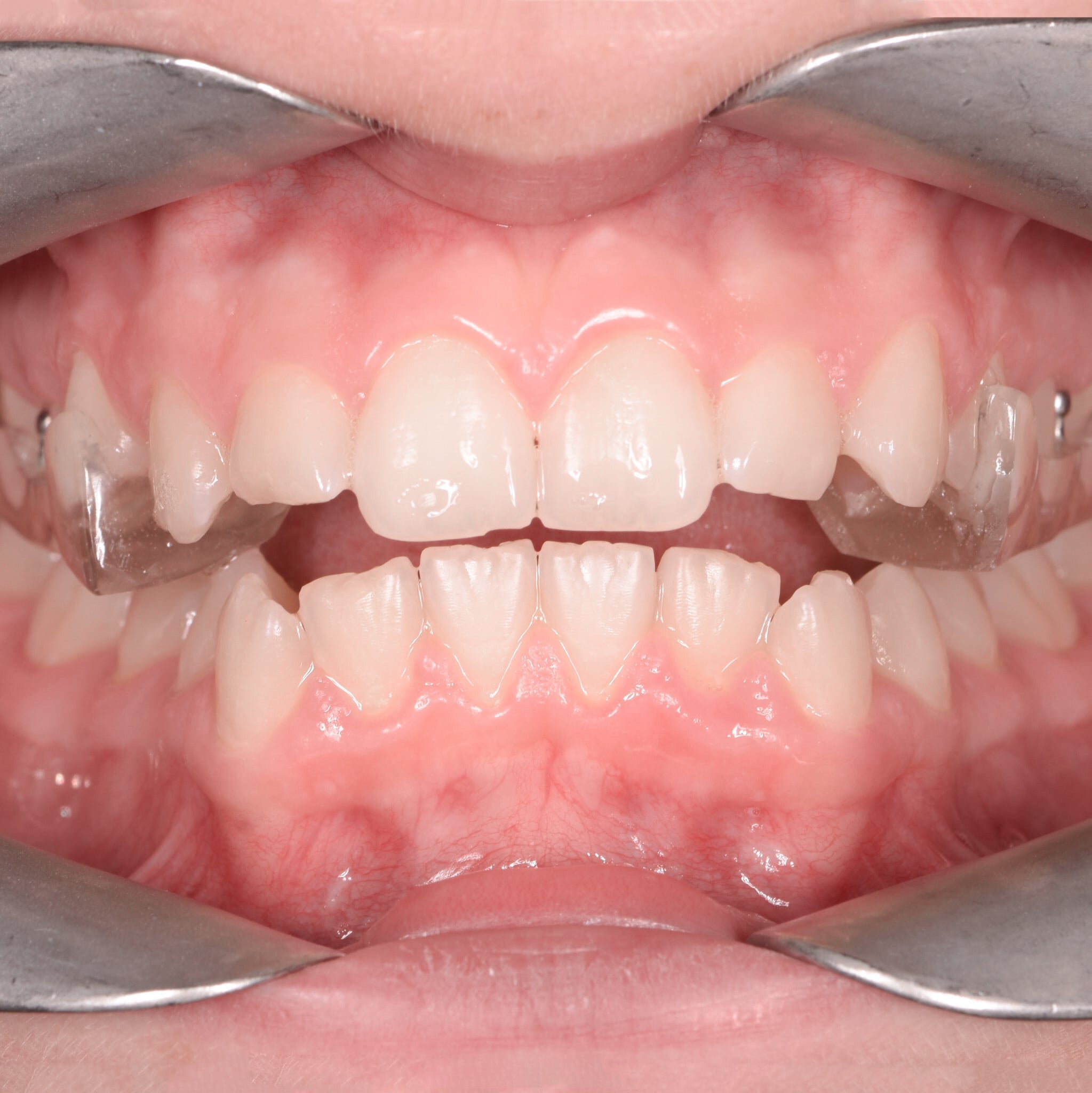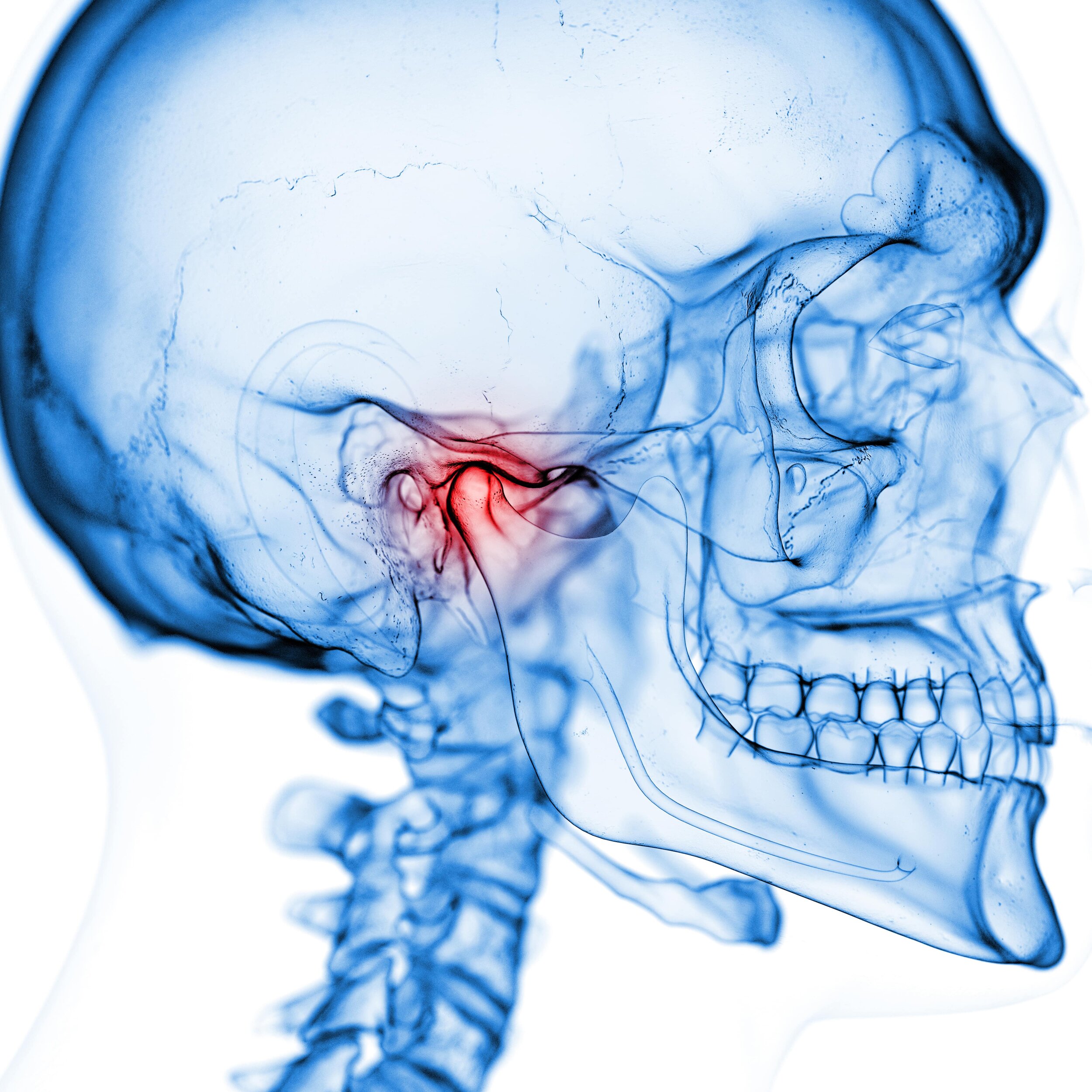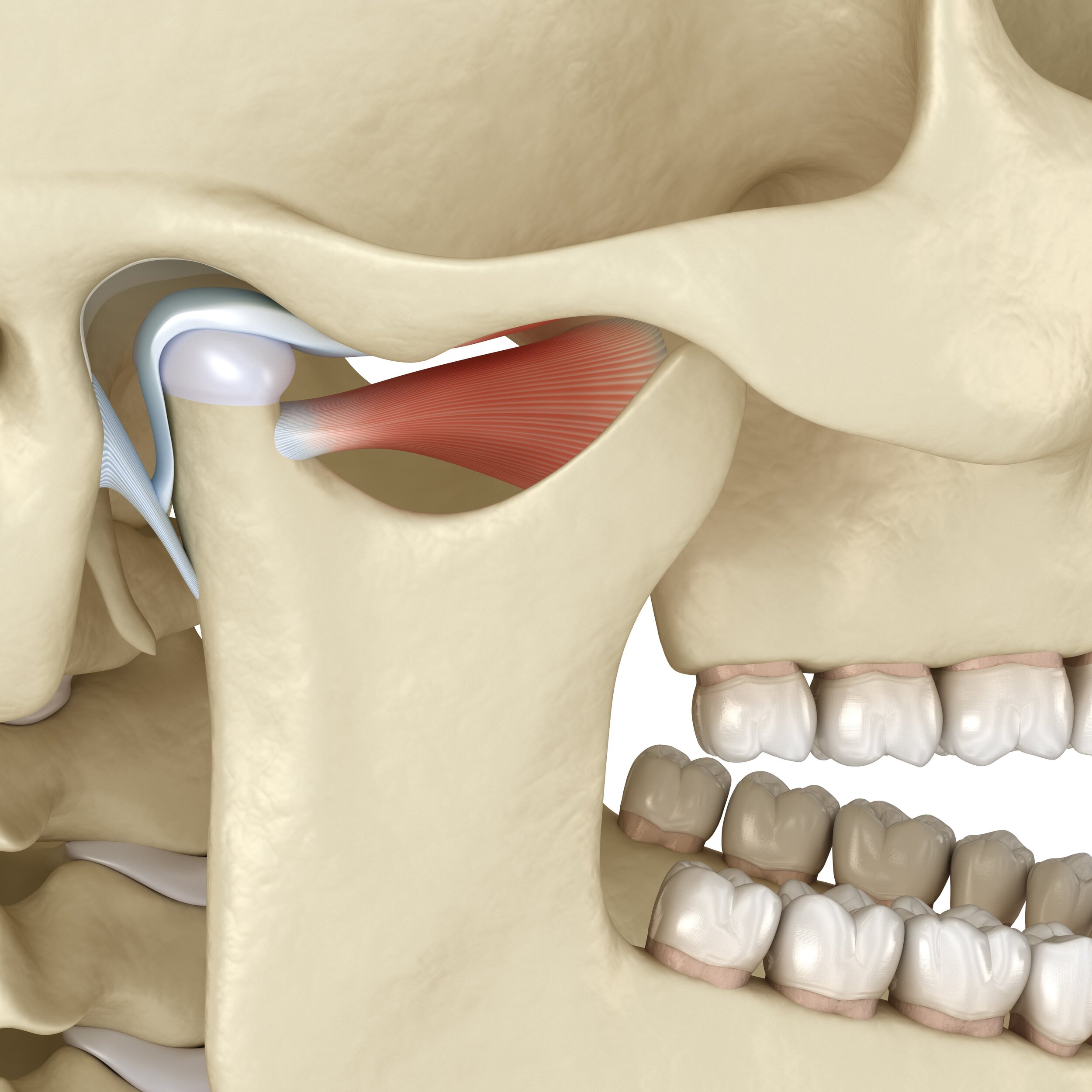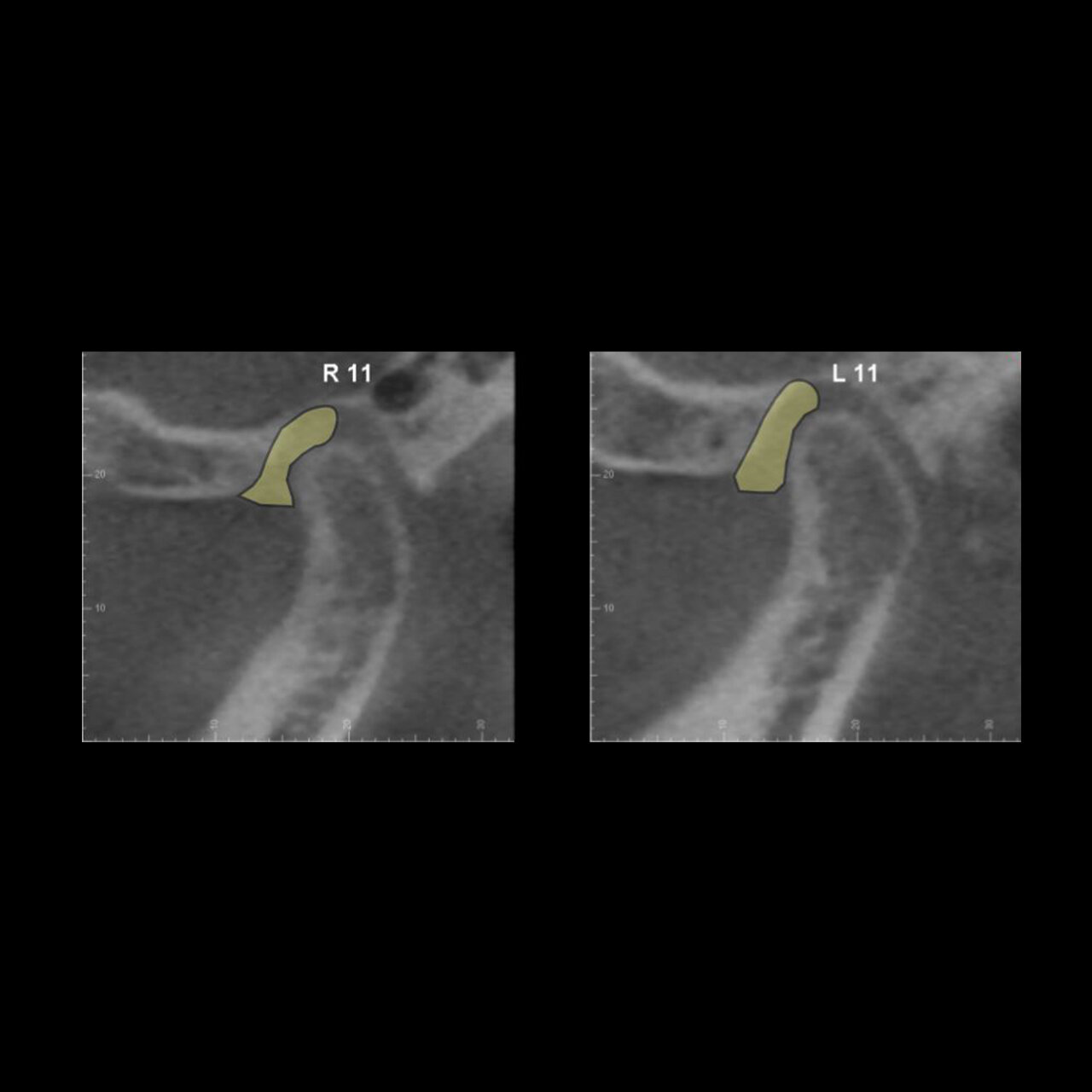Orthodontics + TMJ Disorders
At a Glance
F.A.Q.
Before & After
There is much more to orthodontics than just straightening teeth. All the components of your bite must function in perfect harmony: teeth, muscles and TMJ. Hence, having a healthy and painless Temporomandibular Joint (TMJ) is essential for the optimal function of the masticatory system.
Life-changing experience
We understand that it is not enjoyable to live with the day to day discomfort of a painful TMJ.
Over time, multiple factors can aggress the structures of the temporomandibular joint, the masticatory muscles and the integrity and position of the articular disc. The continuous stress of the TMJ structures will lead in time to complex disorders which impact the life of our patients in various ways. The treatment of such disturbances may need a complex approach and requires the ability of the specialist medical professionals to approach it from multiple perspectives.
At a Glance
Treatment Time
3 to 12 months
Discomfort
None to Mild
Review Appointments
every 1 to 4 weeks
Routine Adjustment Treatment Time
15-45 minutes
Retention
Life-long or until a definitive treatment
Price
from £1800
F.A.Q.
Is it painful?
Wearing a TMJ orthodontic appliance is not painful. You can expect a level of discomfort which will be different for each individual and which will be depending on the condition of your temporomandibular joint.
Why do I need an MRI or a CBCT scan if I suffer from TMJ disorders?
Purely because we need to visualise the status of your jaw joints before performing any treatment. The gold standard procedure used to assess the health of the soft tissue components of the temporomandibular joint is MRI. It is an expensive imaging technique, but in certain circumstances it is mandatory. Nevertheless, on many occasions, the information we get from a routine CBCT (Cone Beam Computed Tomography) scan is enough for us to plan your treatment.
What care is in place if I have a problem?
We always offer appointments to see patients as soon as possible. Your care is important for us and we are always on hand to give advice and help you resolve the problem efficiently.
For how many hours a day do I need to wear my TMJ appliance?
Depending on the condition of your TMJ and the objectives of the treatment, our specialists will design a treatment plan tailored for your specific needs. For example, you may be asked to wear a removable appliance for a few hours a day in conjunction with regular physiotherapy/ osteopathy sessions . We will try to work around your schedule and your social activities.
How is the TMJ disorders treatment going to change my day to day routine?
The treatment of the TMD through orthodontic appliances is not actually changing your day to day routine. Your speech may be affected for a few days, until you get used to your new appliance and sometimes we can also suggest changing your lifestyle and your dietary choices for an improved overall health.
How can I pay for my treatment?
Once you have decided to start treatment, our Treatment Coordinator will be in touch with you and will talk you through the various financial packages we can offer you.
Cases
Lorem Ipsum
* This section can be hidden for the launch and added later on, either with the information about the treatment for the 4 columns within the horizontal scroll row or with a summary of relevant blog posts from the “e-Life” blog collection.
Scroll
→Subtitle
Lorem ipsum dolor sit amet, consectetur adipiscing elit. Maecenas eleifend efficitur felis, ac lobortis mi placerat in. Maecenas felis nunc, tincidunt sit amet sapien a, porttitor pulvinar magna. Curabitur in elementum mauris. Praesent neque lectus, suscipit ut dolor a, facilisis suscipit sem. Cras in rhoncus augue. Donec vel tortor ligula. Phasellus non mollis velit, vitae fringilla risus.
Subtitle
Lorem ipsum dolor sit amet, consectetur adipiscing elit. Maecenas eleifend efficitur felis, ac lobortis mi placerat in. Maecenas felis nunc, tincidunt sit amet sapien a, porttitor pulvinar magna. Curabitur in elementum mauris. Praesent neque lectus, suscipit ut dolor a, facilisis suscipit sem. Cras in rhoncus augue. Donec vel tortor ligula. Phasellus non mollis velit, vitae fringilla risus.
Subtitle
Lorem ipsum dolor sit amet, consectetur adipiscing elit. Maecenas eleifend efficitur felis, ac lobortis mi placerat in. Maecenas felis nunc, tincidunt sit amet sapien a, porttitor pulvinar magna. Curabitur in elementum mauris. Praesent neque lectus, suscipit ut dolor a, facilisis suscipit sem. Cras in rhoncus augue. Donec vel tortor ligula. Phasellus non mollis velit, vitae fringilla risus.
Subtitle
Lorem ipsum dolor sit amet, consectetur adipiscing elit. Maecenas eleifend efficitur felis, ac lobortis mi placerat in. Maecenas felis nunc, tincidunt sit amet sapien a, porttitor pulvinar magna. Curabitur in elementum mauris. Praesent neque lectus, suscipit ut dolor a, facilisis suscipit sem. Cras in rhoncus augue. Donec vel tortor ligula. Phasellus non mollis velit, vitae fringilla risus.
How do we treat TMJ disorders?
TMJ disorders are a multifactorial condition, which may have multiple solutions and multiple treatments that work synergistically to help the body heal.
Step 1: thorough diagnosis
In order to properly analyse your bite and to establish if there is as possible connection between the way your teeth meet and the developing of TMJ pathology, we will assess your bite from multiple points of view.
The functional point of view. How are you using your dentition?
The temporomandibular joint point of view. First of all, we will perform a thorough clinical examination of your jaw joint. Secondly, we ask for a CBCT scan or an MRI of your TMJ to make sure there is no ongoing pathologic / active degenerative process. The images obtained will help us “see” how the lower jaw bone, the articular disc, the soft tissues in the joint and the muscles have adapted to the way you bite.
The teeth point of view. How are your teeth meeting together? What is your real bite? Can it be corrected by orthodontic means?
The muscular point of view. Are the muscles around your TMJ painful? What about the facial, cervical and back muscles?
The cervical and postural point of view. Do you have a correct body posture? What about your cervical and back spine?
Step 2: comprehensive and tailored treatment
The treatment of the TMJ disorders might involve:
Wearing a splint ( a custom-made appliance made in our lab, which will help the jaw joint muscles relax and will put your TMJ at rest).
Having orthodontic treatment in order to correct your bite
Having several sessions of physiotherapy to help you relax the face, neck and back muscles.
Meeting an osteopath or an expert in body posture.
Meeting a specialist in joint surgery or face surgery.
Changing your lifestyle
Full mouth rehabilitation of your dentition.
To do all / a combination of all the above in more complex cases
